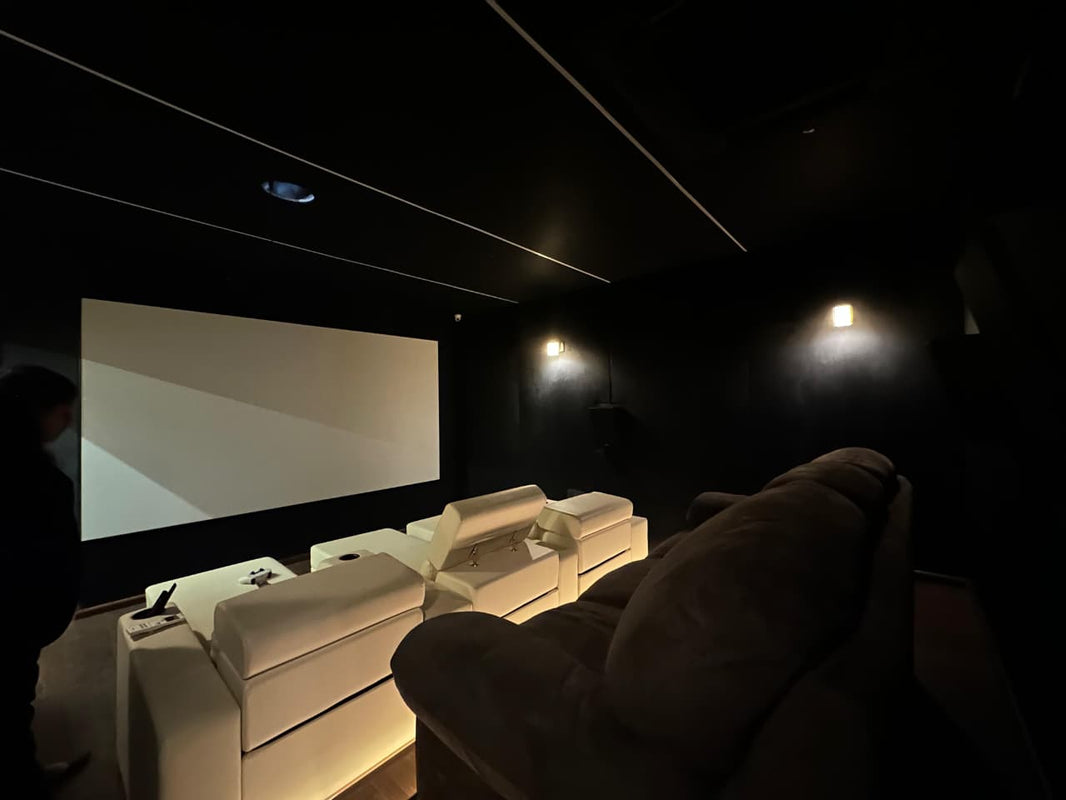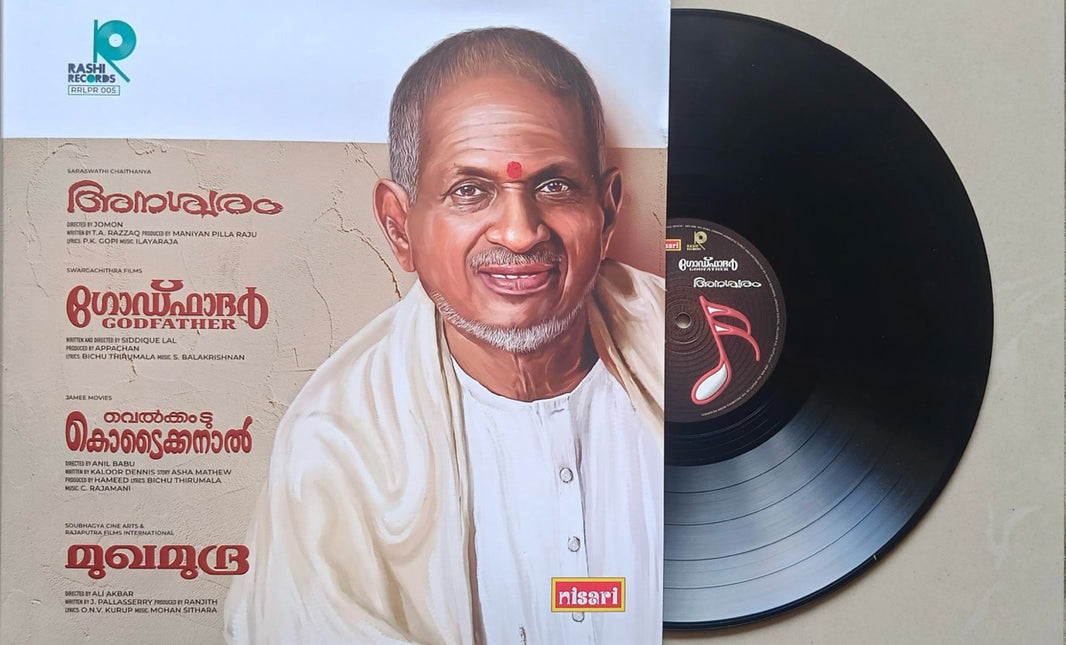"If you’ve ever stepped into a professional audio setup or explored how podcasts and videos get their sound just right, you’ve probably come across the terms studio monitors and hi-fi speakers. While both play sound, they serve very different purposes and understanding those differences can completely change how you experience or create audio."
In this article, we’ll break down what studio monitors and hi-fi speakers really are, explore their key characteristics, and explain why choosing the right speakers matters whether you’re mixing tracks, enjoying music, or setting up your home theater, and why they're essential for anyone serious about sound.
What Really Sets Them Apart?!
Studio monitors are a specialised loudspeakers designed specifically for professional audio production environments in the recording, mixing, and mastering process. From bedroom setups to world-class facilities, you’ll find studio monitors in just about every professional audio environment.
"At first glance, they might look a lot like regular hi-fi or home cinema speakers sleek boxes with cones and tweeters. But don’t be fooled by the similarity." There’s a big difference in how they’re designed to behave. If we had to explain it in the simplest possible way.
"Hi-fi speakers are designed to make everything sound good. Studio monitors are designed to show you what sounds bad."
That might sound strange. But it's actually what makes studio monitors so valuable. They’re built for critical listening, not casual enjoyment. Their goal is to reveal flaws in the audio. So, the producers and engineers can fix them.
What is Studio Monitors and Hi-Fi Speakers?
Studio monitors are specialised loudspeakers designed for professional audio work like recording, mixing, and mastering music, podcasts, film audio, or anything that requires sound precision. While the regular speakers like Bluetooth or hi-fi systems often boost certain frequencies to sound more exciting or warm, studio monitors focus on one thing that is Accuracy.
They’re built with a flat frequency response, which means they don’t add extra bass, shine, or warmth. They reproduce the sound exactly as it is, without enhancements even if that makes it sound a little “worse” than what you’re used to hearing. And, this flat response is crucial in professional audio work like recording, mixing, and mastering because it allows producers and engineers to hear exactly what’s in the audio.
By hearing the sound as it truly is, any flaws or imbalances become easier to detect and correct. This results in a final product that sounds great across all playback systems, from car stereos to earbuds. In short, studio monitors are the trusted ears behind the music and audio you hear every day.
What Are Hi-Fi Speakers and Why They Make Music Feel So Good
If you’ve ever listened to music on a good pair of speakers and thought, "Wow, this sound or track is so incredible?!"
Yes! The chances are there because you were hearing it through High-Fidelity or Hi-Fi speakers. Hi-Fi speakers are designed not just to play music, but to make it feel amazing. We call them as the audio beautifiers. They don’t just reproduce the sound while they enhance it. and, bring out the warmth, the depth, and the sparkle making every beat and note feel richer and more emotionally satisfying.
Now, compare that to studio monitors; which are kind of like microscopes for sound. They aim for accuracy, exposing every tiny flaw or imperfection in a track. That’s great for mixing music, but not always ideal for just enjoying it.
Hi-Fi speakers, on the other hand, are more like mood lighting. They might smooth out the edges, boost the bass a little, or add a gentle shimmer to the highs. In short, they make your favorite songs come alive even if it means adding a bit of color to the truth.
This speakers are ideal for casual listening at home, whether you’re streaming music or spinning a vinyl. Most of them are passive, means they need an external amplifier to power them. They’re usually designed as far-field speakers, built to fill a room with sound rather than being listened to up close.
In a way, Hi-Fi speakers are like a trusted companion who highlights the best qualities of your music, even if there are minor imperfections. They present your audio in the most flattering light, enhancing the experience while gently smoothing over small flaws.
What does this mean for you or why its important?!
Whether you’re producing music, editing podcasts, or just want to get the best sound out of your home setup, using studio monitors ensures that you’re making decisions based on accuracy not on how the speakers might be flattering or altering the sound. This honesty helps you create audio that translates well everywhere.
Key Features of Studio Monitor
Studio monitors hold several key features like flat frequency response, nearfield monitoring/Listening, active design, and at last the purpose-built for audio work. I will explain you each features.
Flat Frequency Response
Flat sound is the first main feature that a studio monitor have. Flat sound which means, the studio monitors will deliver a neutral, uncoloured sound that means no boosts or cuts to any frequency range. This flat response ensures you for to hear the audio exactly as it is helping you to make the precise adjustments.
"All it means the speaker tries not to emphasise or reduce any part of the audio spectrum. No added bass. No extra sparkle. No warmth that wasn’t there in the first place."
Getting accurate sound matters a lot in pro audio work especially when you’re recording, mixing, or mastering. During recording, you want to hear exactly what’s going into the mic. No surprises, no guessing. When you’re mixing, it’s all about that balance levels like EQ, effects and if your speakers aren’t honest, you’re flying blind. And mastering?! that’s the final touch. You need the track to sound great everywhere in the studio, in your car, on a big club system, or even through some beat-up old earbuds. If your speakers aren’t telling the truth, your music won’t translate the way you want it to.
Nearfield Monitoring
Near-Field listening/monitoring were designed to be placed close to your ears for to minimising the impact of room acoustics. This focused listening environment helps reduce unwanted reflections and coloration, giving you a clearer picture of your mix.
Accuracy and Transparency
"They are designed for accuracy and transparency, faithfully revealing the true characteristics of the audio without introducing any artificial coloration or 'flavor.'"
Active Vs Passive Design
Most studio monitors these days are active, which means they come with built-in amplifiers just plug them in, and you're good to go. Passive monitors don’t have an amp inside, so you’ll need to connect them to an external amplifier to get sound.
Purpose-Built for Audio Work
You’re mixing, mastering, recording, or designing sound, studio monitors are engineered to support all stages of professional audio production. Because, the most studio monitors come with built-in amplifiers, so they’re ready to go right out of the box. This “plug-and-play” setup simplifies your workflow without needing external amps or extra gear.
Features of Hi- Fi Speakers
Hi-Fi (High Fidelity) systems are engineered to deliver accurate sound reproduction, aiming to replicate audio exactly as it was originally recorded. This involves capturing subtle details like instrument separation, spatial cues, and the unique timbre of vocals and instruments. A critical focus of Hi-Fi is enhancing audio quality by minimising distortion and background noise, which improves clarity, depth, and dynamic range for a richer and more immersive listening experience. Hi-Fi systems typically offer a broad frequency response, reproducing everything from deep bass to shimmering high treble, ensuring no part of the sound spectrum is lost.
The absence of unwanted noise and distortion is essential, resulting in a clean, pure signal. With a wide dynamic range, Hi-Fi setups allow listeners to experience both the quietest nuances and the most powerful moments in music clearly and distinctly. Although not part of the system itself, room acoustics significantly impact the overall sound, making proper room treatment an important consideration. Moreover, Hi-Fi enthusiasts often carefully match components such as amplifiers, speakers, and sources to optimize performance and achieve synergy. Ultimately, personal preference plays a large role in what constitutes a great Hi-Fi experience, as sound enjoyment is highly subjective and varies from listener to listener.
Who Needs Studio Monitors and Hi-Fi Speakers?
You don’t have to be working in a fancy, million-dollar studio or invest a huge amount of money to get enormous benefits from studio monitors. Whether you’re a Lo-fi producer, podcaster, YouTuber, film sound designer, or anyone serious about audio quality, having a good pair of studio monitors is a game changer. Even just one solid set can completely transform how your content sounds. You might wonder, “But can’t I just use headphones?”
The answer is yes headphones are great for many tasks but they don’t tell the full story. Headphones isolate your ears and can distort stereo imaging, sometimes tricking you into thinking your mix sounds different than it actually does. Studio monitors allow you to hear your audio in real space, revealing how it behaves in a room, which makes all the difference in making precise, reliable mixes.
On the other hand, Hi-Fi speakers are perfect for those who want to enjoy music with a rich, immersive, and pleasing sound. Audiophiles and casual listeners alike appreciate Hi-Fi systems for their ability to reproduce the music’s full emotional impact, capturing subtle details, broad frequency ranges, and delivering a clean, dynamic sound that fills a room. While studio monitors are focused on revealing every flaw and detail for production purposes, Hi-Fi speakers are designed to enhance and elevate the listening experience for pure enjoyment. Both have their place, depending on whether you’re creating audio or simply savouring it.
Understanding Their Distinct Roles and Listening Experiences
Studio monitors and hi-fi speakers serve different purposes and cater to distinct listening needs. Studio monitors are designed to deliver a flat, accurate, and honest sound profile, making them essential tools for mixing, mastering, and music production. Their goal is to reveal every detail and flaw in the audio, allowing creators and audio professionals to make precise adjustments. Typically, studio monitors are active speakers, meaning they have built-in amplifiers, and they are intended for nearfield listening, which means they are used close to the listener for detailed sound evaluation. On the other hand, hi-fi speakers focus on providing a colored, musical, and pleasing sound experience, primarily aimed at music enjoyment and casual listening. They are usually passive speakers, requiring an external amplifier, and are designed for far-field listening to fill a room with sound. Hi-fi speakers aim to enhance the listening experience, making them a favorite among audiophiles and everyday listeners who want to enjoy music in a more engaging and immersive way.
Can You Use One for Both?
"Technically, yes. You can use studio monitors for casual listening, and Hi-Fi speakers for mixing. But honestly? It’s not the best idea."
Mixing on Hi-Fi speakers? You’re kind of guessing how your music actually sounds because they’re designed to make things sound nice, not perfectly accurate. Listening to music casually on studio monitors? It might feel a little dry or flat since they’re built to be super honest, not necessarily fun.
"It really comes down to what you want. Are you trying to create something accurate, or just enjoy the sound?!"
If you’re making music, editing podcasts, or working with audio, studio monitors are your best friend. But if you’re kicking back with a glass of wine and your favorite playlist, Hi-Fi speakers will make that experience way more enjoyable.
Technical Differences Between Studio Monitors and Hi- Fi Speakers
While studio monitors and typical speakers share some similarities, there are key technical distinctions that set them apart. Here’s a breakdown of the main differences;
Built-in Amplification vs. External Power
Studio monitors usually come as active units, meaning they have built-in amplifiers tailored specifically for their drivers. On the other hand, standard home speakers are often passive, relying on an external amplifier or receiver to provide power.
Dedicated Amplifiers for Each Driver
In active studio monitors, you’ll often find separate amplifiers for each speaker driver woofers, midranges, and tweeters each have their own power source. This separation allows for greater control and precision in sound reproduction.
Sophisticated Crossover Networks
The crossover in studio monitors is designed to split audio signals so each driver receives only the frequencies it handles best. This ensures cleaner, more accurate sound by minimising overlap and distortion between frequency ranges.
Sound Accuracy and Neutrality
Unlike consumer speakers, which might enhance bass or treble for a more “pleasant” sound, studio monitors aim for a neutral, uncoloured sound profile. This flat frequency response helps producers hear every detail clearly, making it easier to identify flaws and make precise adjustments during mixing.
Final Takeaway
Studio monitors aren’t here to make things sound great. They’re here to help you make things sound great everywhere. Sure, they might sound a bit harsh or revealing at first, even unflattering. But that’s exactly why pros rely on them.
So, next time you’re choosing new speakers, ask yourself " Do I want to enjoy the sound or understand it?!









